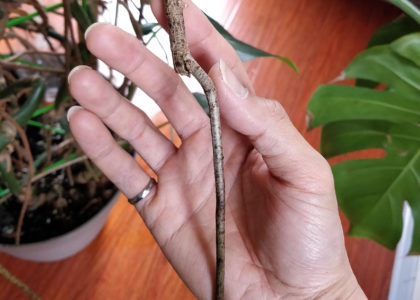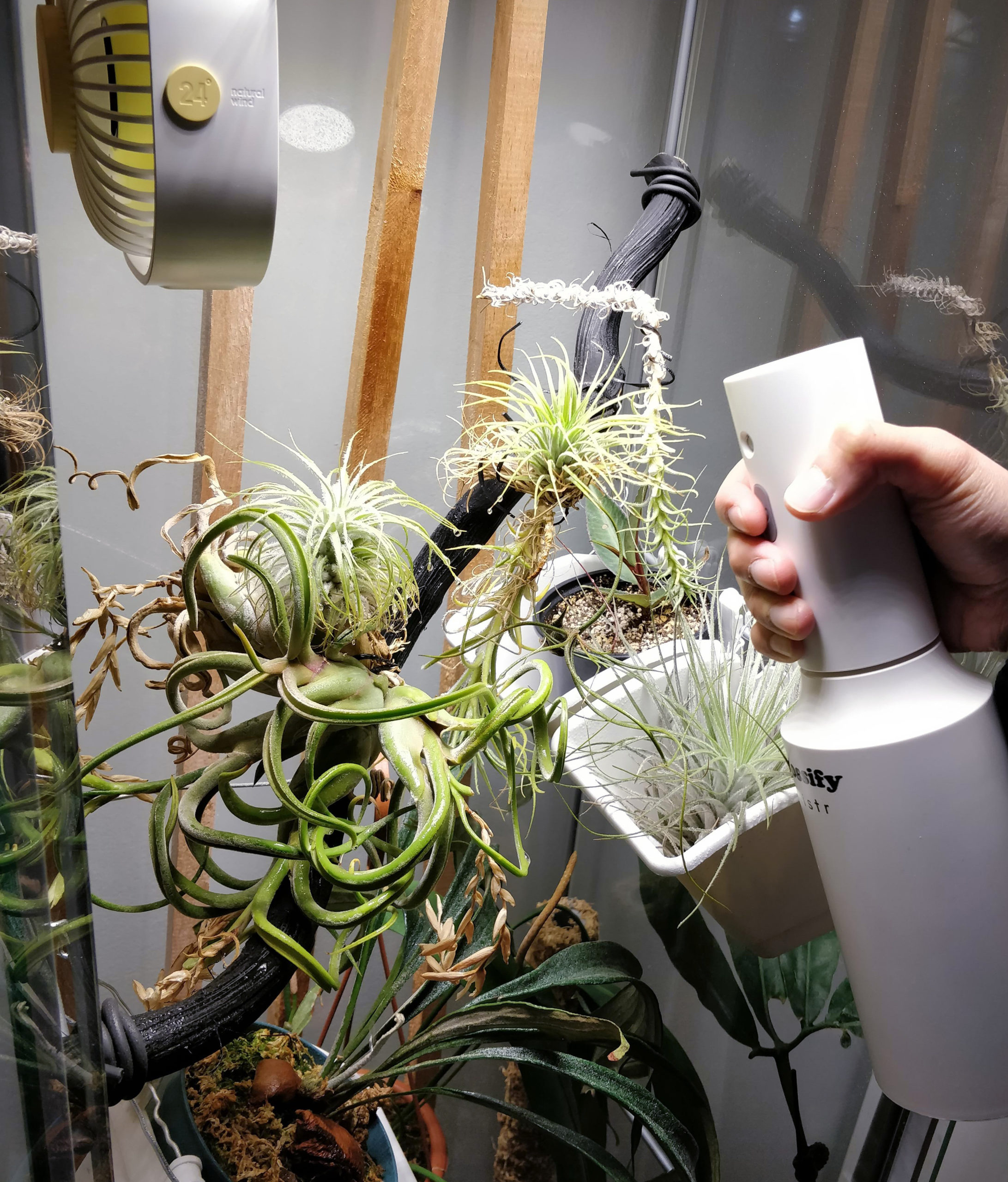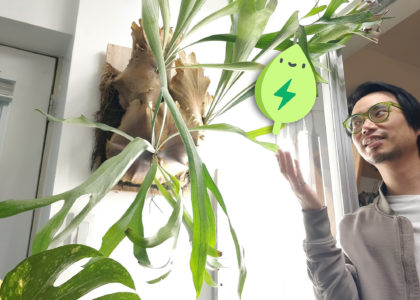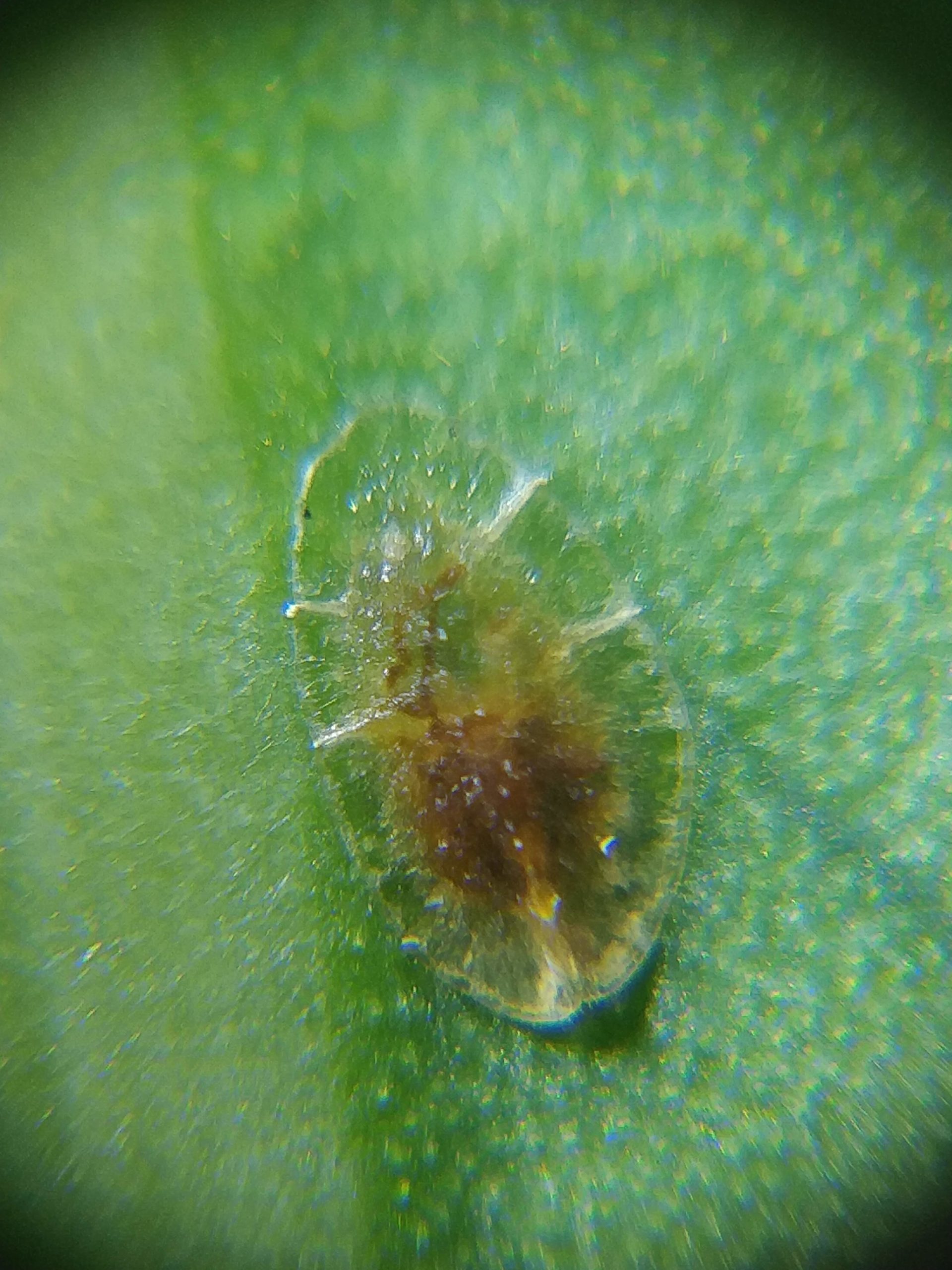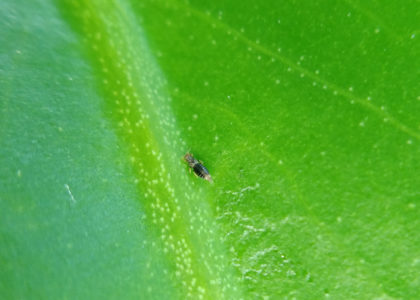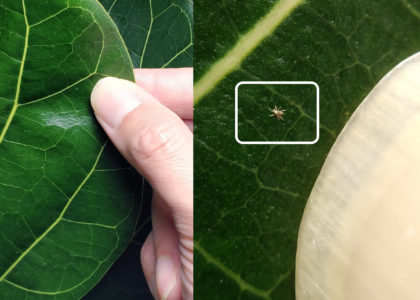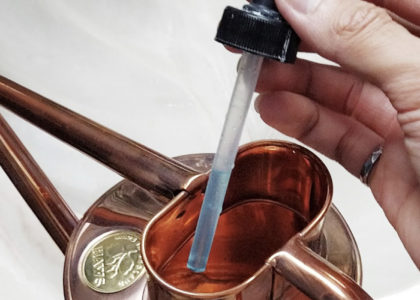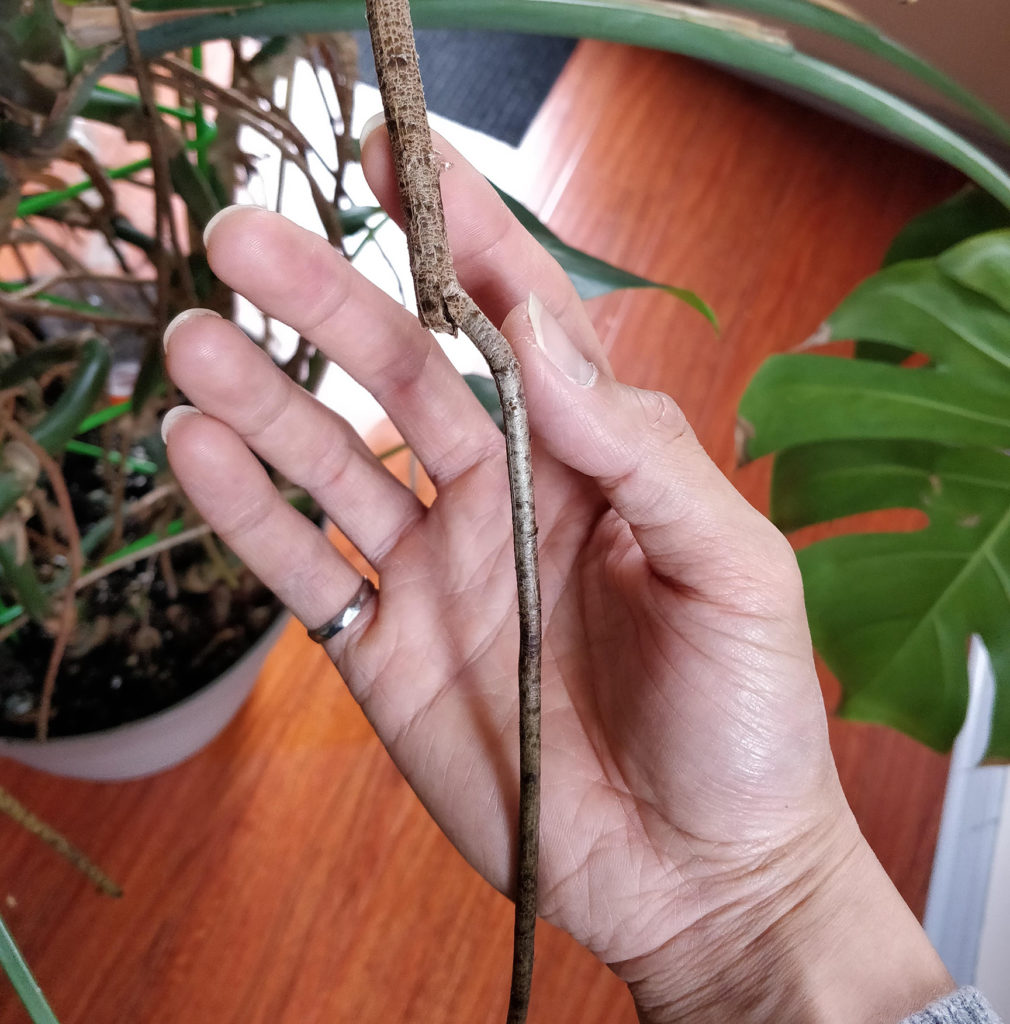Plant Parent
Is it okay to cut off my Monstera’s aerial roots?
Darryl
As a matter of convenience, yes. I usually try to direct them into the pot but they’ll eventually creep out, at which point I just cut them:
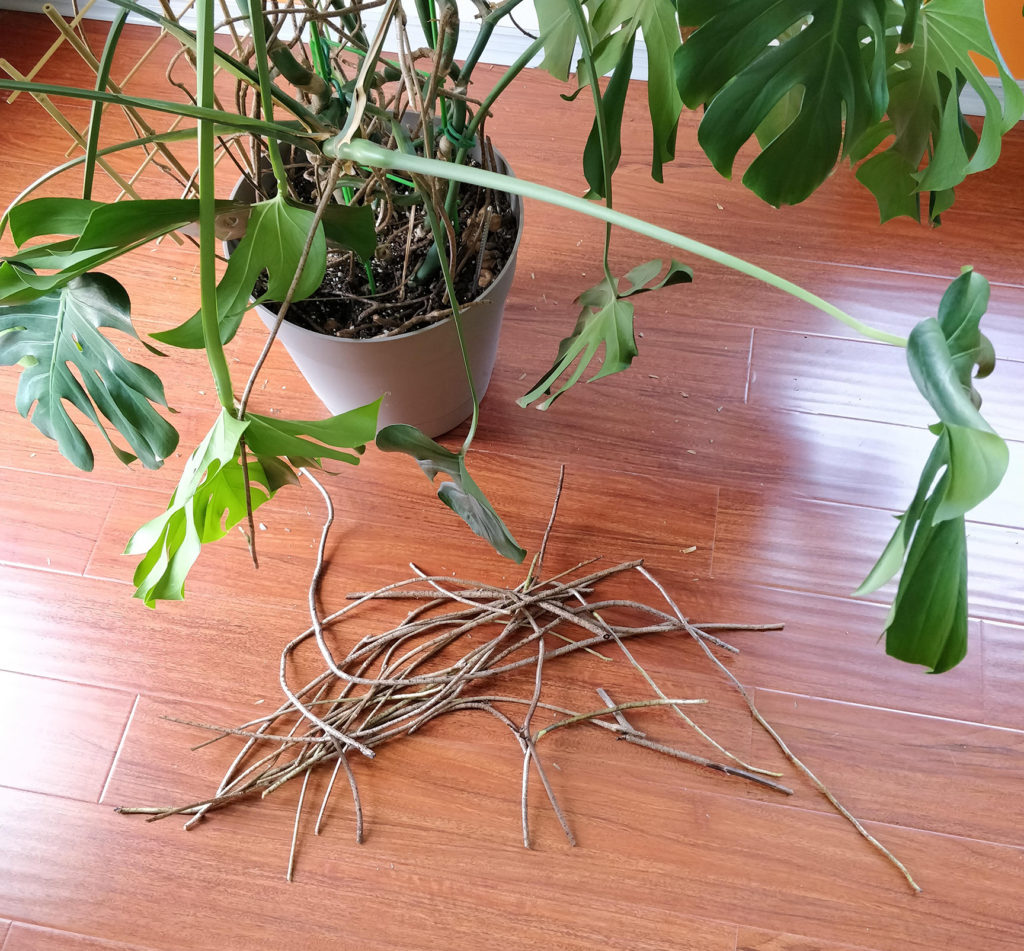
I’ve done this for years without any noticeable impact on the overall growth of the plant: here’s my plant 4 years apart…
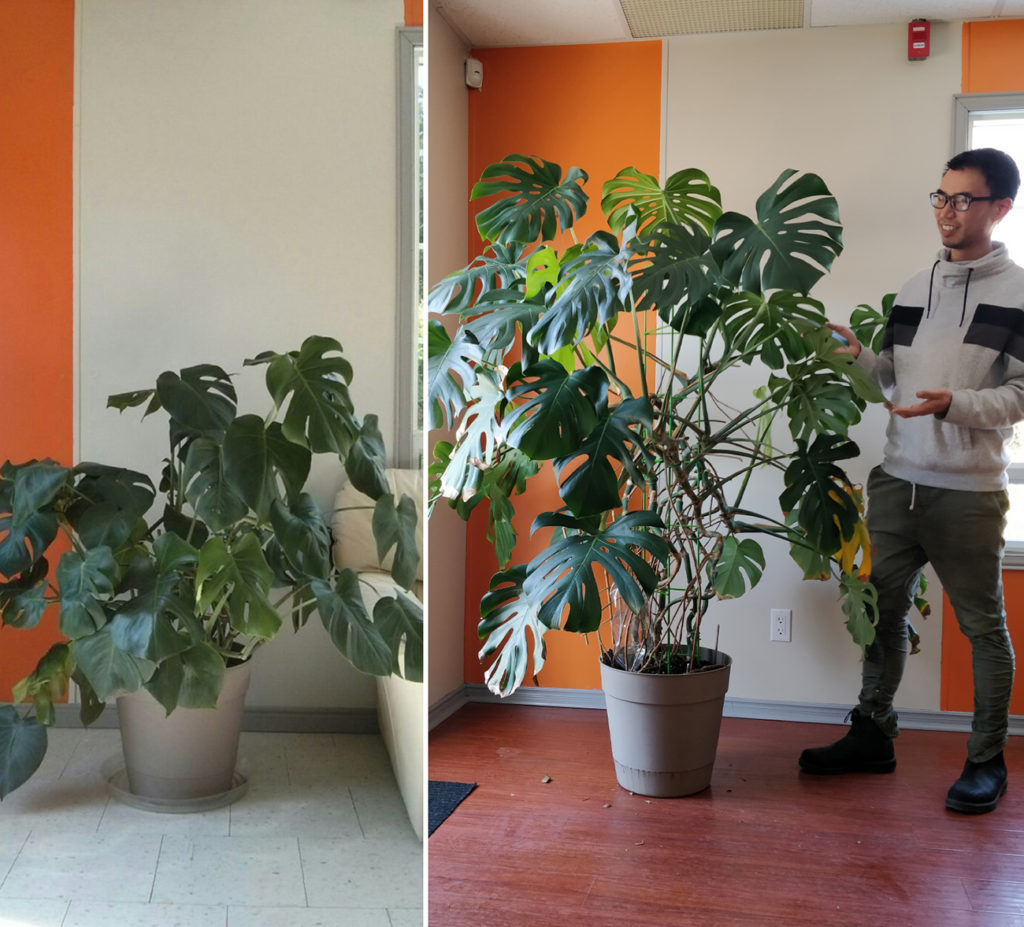
If your growing conditions are good (adequate light) and you’re watering/fertilizing accordingly, then everything keeps growing – including aerial roots after they’re cut:
A small Monstera deliciosa will eventually grow many aerial roots, creating a crazy jungle look – here’s the view from below my monstera:
I personally like this look but if you’re looking for cleaner lines, you can cut off aerial roots and the plant will be just fine – as long as LIGHT is good.
If you want to learn houseplant care in a systematic way (rather than blindly following random tips and tricks), check out my online course: Essentials of Houseplant Enjoyment
